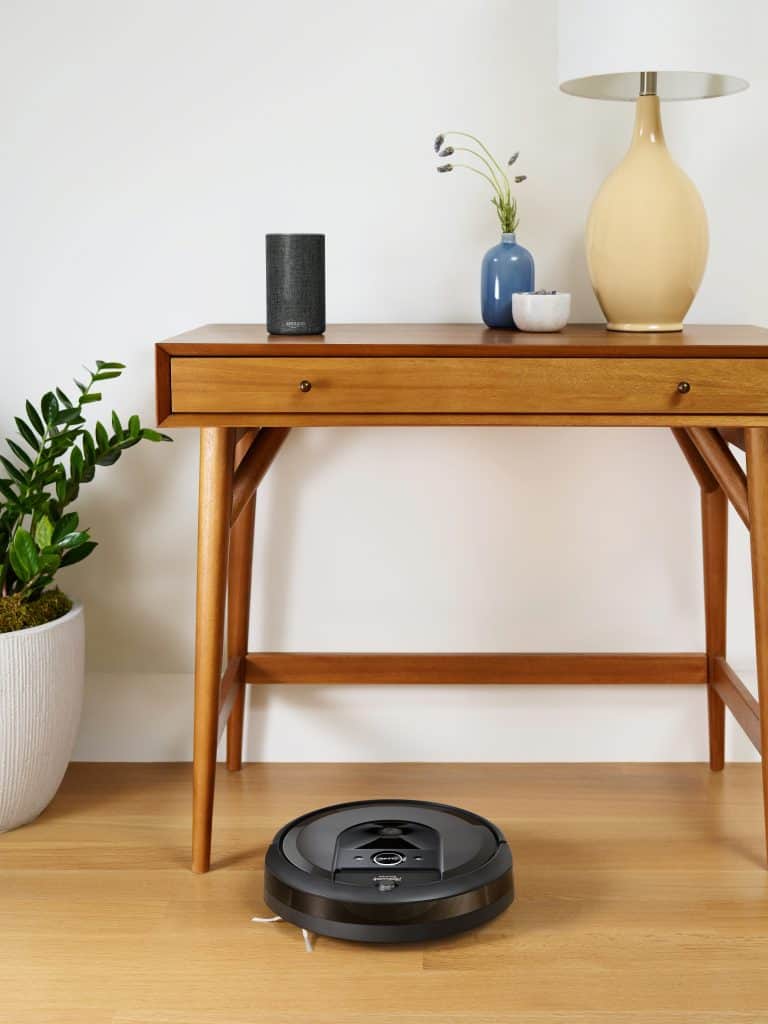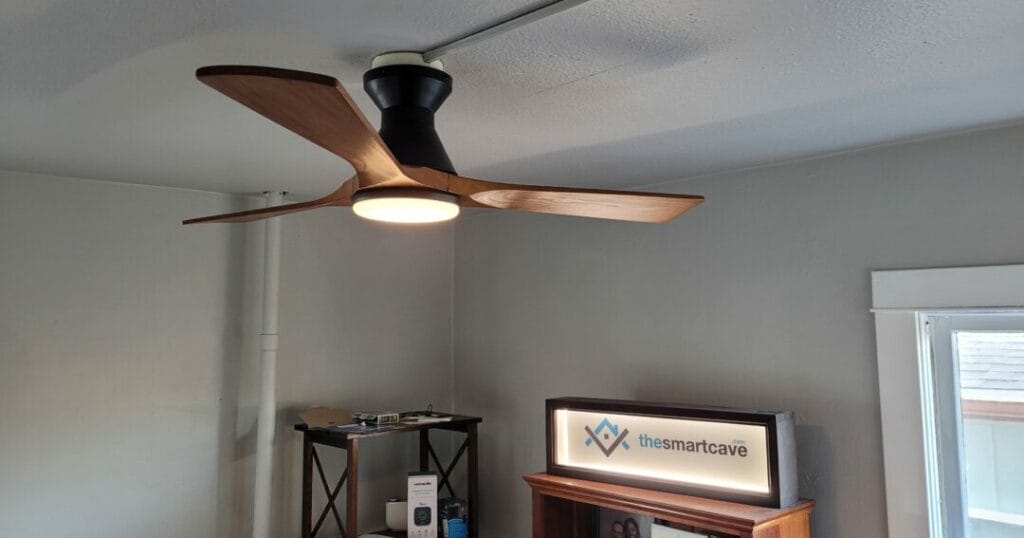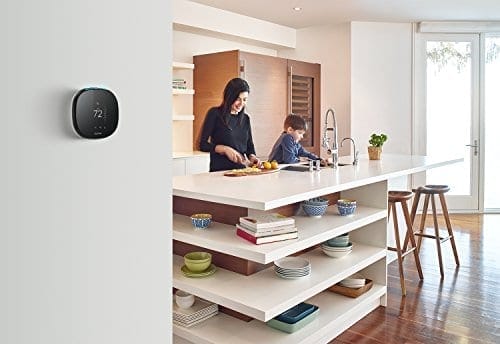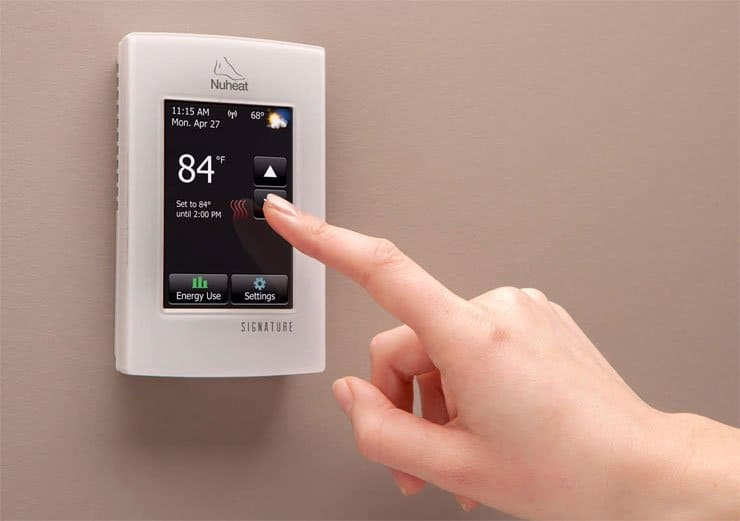Robot vacuums can save you an enormous amount of time and housework. There’s a wide variety of them out there on the market today, making it a little difficult to choose what’s best for your household needs.
Before you invest in your own personal Rosie like the Jetsons had, here are some questions to ask before making a decision. After all, you’re looking for the smartest robot vacuum you can get.
| Image | Title | Price | Buy |
|---|---|---|---|
 | iRobot Roomba i7+ (7550) Robot Vacuum with Automatic Dirt Disposal | Buy Now | |
 | Neato Robotics D7 Connected Laser Guided Robot Vacuum | Buy Now | |
 | roborock S6, Robotic Vacuum Cleaner and Mop | Buy Now | |
 | ECOVACS DEEBOT OZMO 950 2-in-1 Vacuuming & Mopping Robot | Buy Now | |
 | Samsung POWERbot R7260 Plus Robot Vacuum | Buy Now |
10 Questions To Ask Before You Buy
1. How does it perform on hard floors vs. carpet?
While every vacuum I looked at had the ability to transition between hard floors and carpet, some get stuck easier than others and most don’t have sensors to differentiate between the two. Depending on what most of your flooring is made of, you may need a different robot vacuum than your neighbor
2. Can it handle pet hair?

I’ve yet to run into a smart vacuum that can’t handle pet hair, although some have their limits. Make sure to test your vacuum on large clumps of pet hair, larger piles of dirt, and pieces of paper to make sure it has the suction power your floors need.
3. How does it handle corners and edges?
Buying your own personal Rosie is supposed to save you time, so checking how your vacuum will clean inside corners and edges is important. Some vacuums are round with edge brushes peeking out from underneath them, allowing them to clean straight wall edges despite being circular.
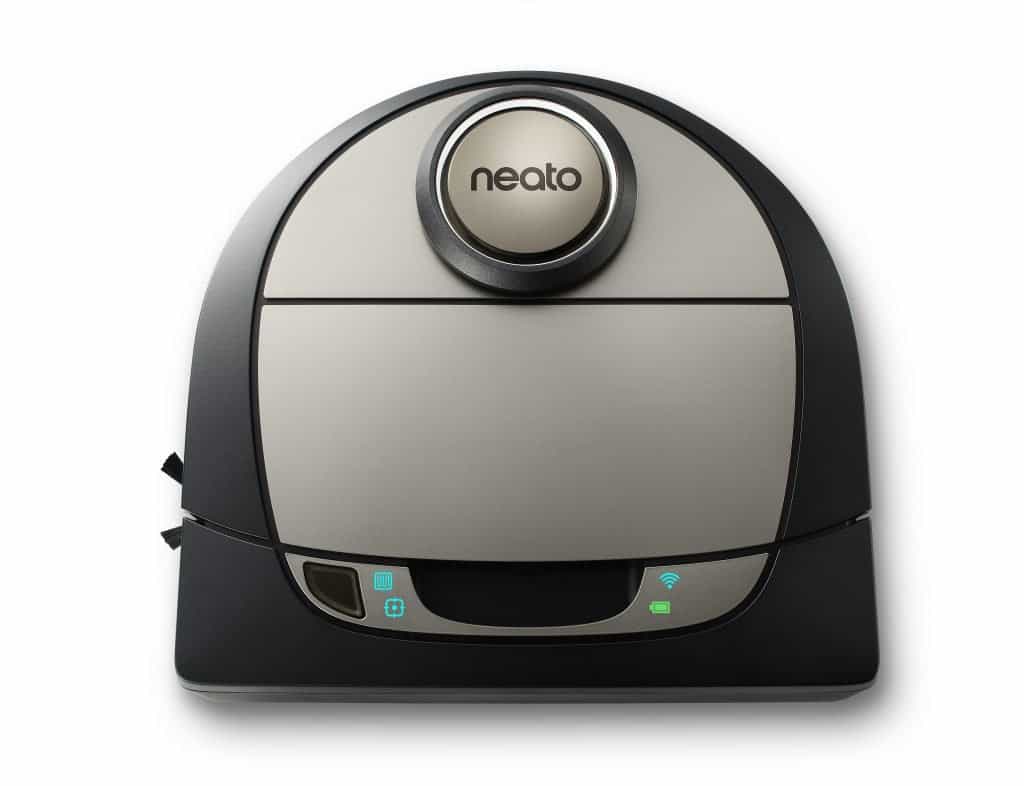
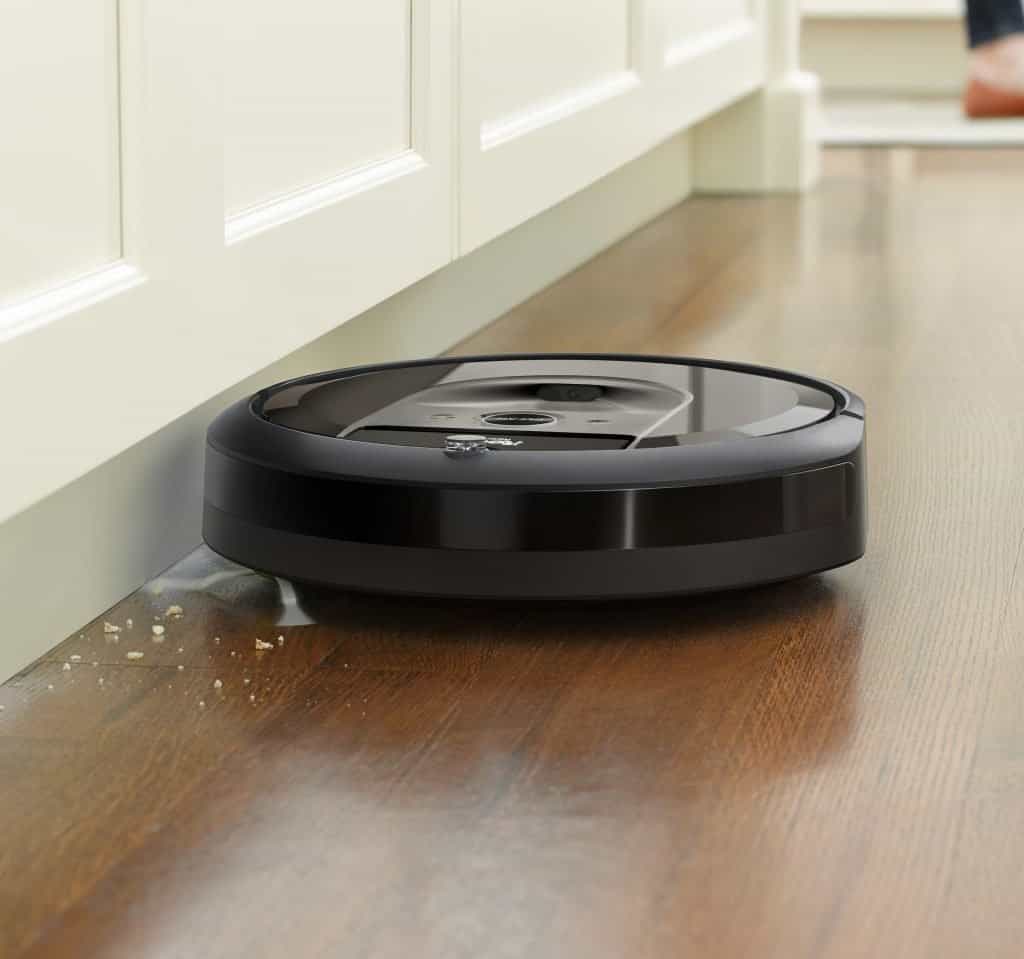
On the other hand, some are in a “D” shape, with one straight side to align and get close on inside corners. However, I didn’t see any reviews that said the “D” shape performed better than the others, so it likely doesn’t make a real difference.
4. Does it get stuck all the time?
One of my major rules for buying smart home stuff is to make sure it makes life easier. It can be very annoying when your “smart” robot vacuum is constantly getting stuck and needing you to walk over and free it. And especially if you’ve set your vacuum to clean your floors while you’re gone, you don’t want to come home to dirty floors and an incompetent vacuum.
5. How much suction power?
This is a really important question to ask yourself before you make a purchase. Depending on the suction power, some robot vacuums struggle to clean up larger piles of dirt, debris, hair, and paper. Dirt gets stuck deep inside carpet, and the stronger the suction power, the more likely your floors will be thoroughly cleaned.
6. Is it self-emptying?

A self-emptying vacuum removes yet another, typically somewhat messy, housecleaning step. Unfortunately, there’s only one smart vacuum I’ve been able to find — the Roomba i7+ — that offers this option as of now.
7. Does it find its way back to its base and recharge?
If a vacuum is able to charge itself, especially by being able to return back to its charging station without needing you to carry it, it removes even more inconvenience for you. Nobody likes a needy robot vacuum that is only partly smart. Having one smart enough to zip back to its base and charge itself is now almost a given.
8. How does it navigate your home?

All of the vacuums have a plan. Each one may look different, though. Some vacuums form squares of each room they’re in, focusing on cleaning each square before moving on to the next one.
Some more advanced vacuums will form long lines to best fit the type of room they’re in. For example, a smarter robot vacuum will form long vertical lines down a hallway to clean it faster and more efficiently, whereas the less advanced vacuums will still go down the hall mapping it out and cleaning square by square.
You also need to ask if you can set up barriers to separate rooms or sections to keep your vacuum from going in certain areas. Some vacuums learn the layout and floor plan of each room and adapt their cleaning patterns to best suit each room’s lines (forming long vertical lines for long hallways). Some can also learn each room by name, so you can schedule it to clean certain rooms on certain days.
9. Does it work with voice control?

This is something you’ll want to know if you want to be able to just talk to it without having to program and push buttons. Voice control is a convenient feature, especially if you often have your hands full and don’t want to fool with messing with your phone screen.
10. Is there an (actually useful) mopping function?
If you’re looking for a smart robot vacuum, chances are you may want it to be able to mop your floors too. Mopping features still seem to be a work in progress, as it hasn’t yet been perfected as well as the vacuum features have been.
If you go with a vacuum that can mop but can’t distinguish between carpet and hardwood, simply make sure to set up barriers so your carpet doesn’t get wet. It’s also recommended to not use soap or cleaning chemicals as it can clog the hoses for certain vacuums’ mopping function.
Top 5 Smartest Robot Vacuums
1. Roomba i7+ Robot Vacuum

The Roomba i7+ is the only robot vacuum that can empty itself. With a hose reaching up to a bin, it empties the dirt inside of it and saves you a somewhat messy job. Plus, the container it empties into can hold up to 30 bins of dirt and hair.
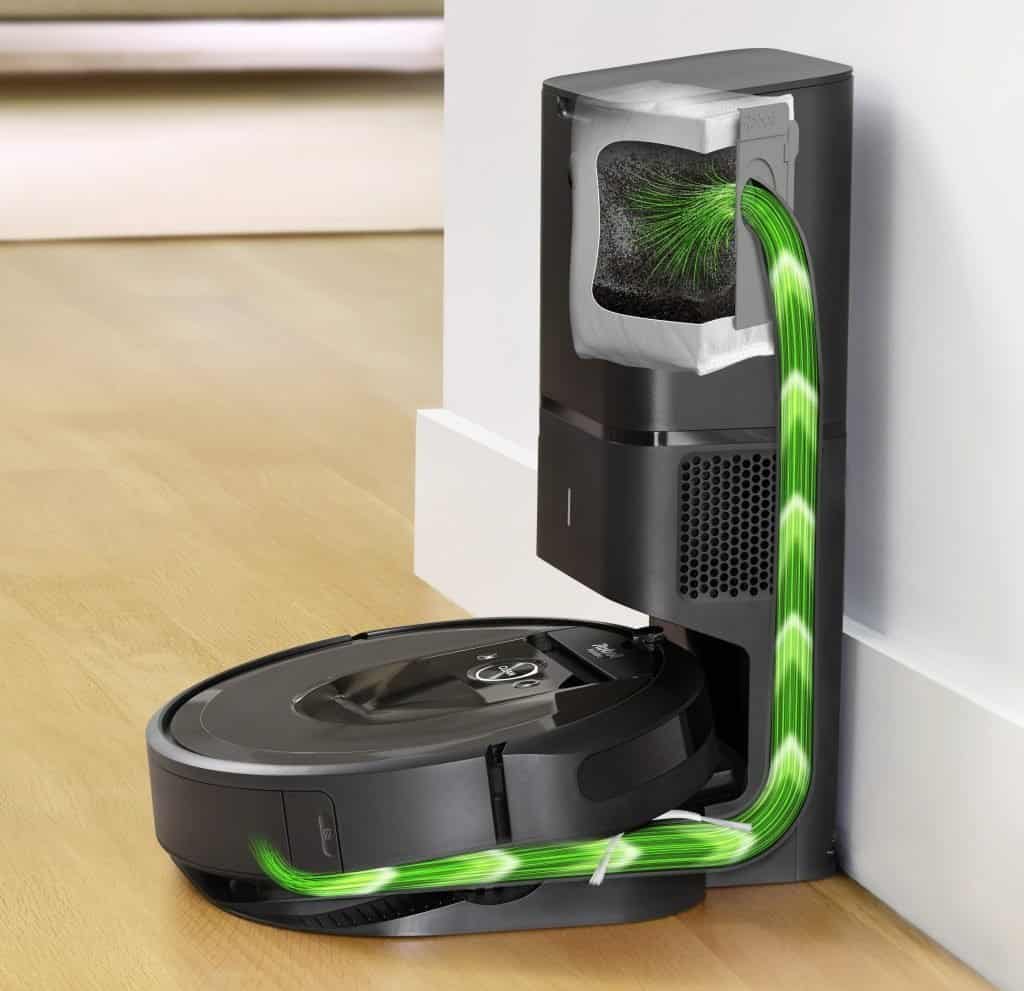
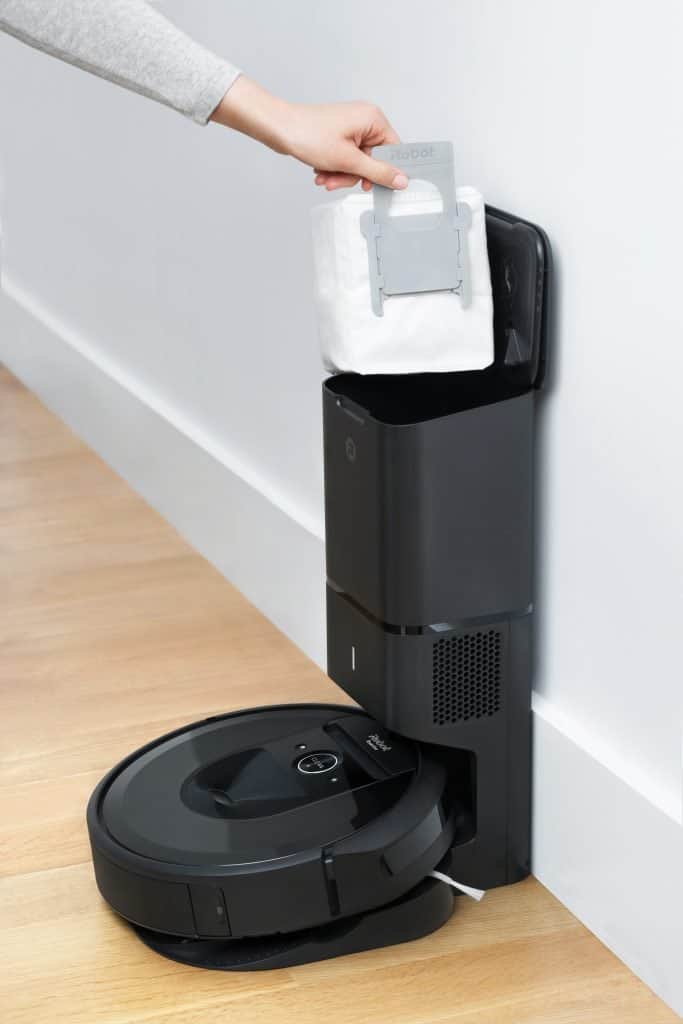
The Roomba has two round brushes right next to each other that roll in opposite directions. One is designed to loosen the dirt while the other one rolls in the opposite direction to pull it up. When it comes to corners and edges, the Roomba has an edge brush extending out from underneath its circular frame to sweep along the straight edges.
It also has an estimated suction power of 1800 Pa.
When tested on hard floors, it runs up to 75 minutes before it needs to recharge itself. Like most robot vacuums, it returns back to its base and recharges once it’s low.
Roomba also has sensors that let it know which spots on the floor have a higher concentration of dirt. This lets it spend more time cleaning those areas so you get the cleanest floor possible. You can also schedule what days and times you want specific rooms cleaned, plus you can schedule your rooms by name.
On top of that, it’s WiFi connected and works with voice control when you connect it to Alexa or Google Assistant. About the only thing this particular Roomba vacuum doesn’t have is a mopping function.
iRobot Roomba i7 | Check Price
2. Neato Botvac D7 Connected

This robot is designed in the shape of a “D” so it can line up with edges and inside corners better than round robots. However, even round robots seem to be able to clean just as well as the Neato, providing they have long enough edge sweepers extending out from underneath them.
The Neato Botvac uses lasers to map out your floor plan and move in straight lines instead of a random pattern, plus it comes with two settings for suction power: Eco and Turbo. The suction power is rated between 1,200-1,500 Pa. It runs for up to 120 minutes by itself before returning back to base and charging (taking 2-3 hours to recharge).
Like every other robot reviewed here, the Neato works on both hard floors and carpet, however, it doesn’t have sensors to keep it from falling down the stairs. Instead, you can create “No-Go Lines” to block your robot from going into certain areas where it’s likely to get stuck.

While it is compatible with voice commands using Alexa or Google Assistant, you have to start it off cleaning with the Neato app or a scheduled cleaning if you want to utilize the No-Go Lines.
Neato Botvac D7 Connected| Check Price
3. Roborock S6

This robot vacuum has the most powerful suction of them all, with a suction rating of 2000 Pa(enough to lift AA batteries). It also maps out rooms so that it doesn’t randomly bump around them, cleaning wide rooms horizontally and long rooms lengthwise. This makes it faster and more efficient because it can adapt to the type of room it’s in.
You can also save each room in your home to be automatically recognized by the robot, so like the Neato, you can direct it to clean certain rooms at certain times.
You can also watch where your vacuum is in real time from your phone, even knowing which direction it’s facing. It also runs very quietly and non-distracting in your home. When its job is done, it returns back to its base to recharge. It has a run-time of around three hours when set to quiet mode, with a 5,200mAh battery powering it up.
The brushes seem to be great at picking up even long hair and leaving your floors actually clean. However, if you have large house, you’ll have to clean out the bin after each cleaning because the bin is a smaller size.
4. ECOVACS DEEBOT OZMO 930

The Deebot is able to detect when it’s on a hard floor versus when it rolls onto carpet. Because it knows the difference between hard floors and carpet, you don’t have to worry about your throw rug getting wet, even if it’s in the middle of your hard wood living room.
The Deebot is also compatible with voice commands, so you can tell it what you want it to do rather than always programming it through your phone.On average, the suction power is 1,000 Pa and runs for an average time of 110 minutes (less if it’s cleaning strictly carpet). It takes up to four hours to charge all of the way.
While it does know the difference between hard floors and carpet, it can’t switch between vacuum and mopping mode without you having to get up and manually change it over. Unfortunately, the Deebot seems to have trouble getting stuck quite a bit and being unable to handle large clumps of pet hair.
Be sure to clear the area you want to clean of small objects, cords, and cables, otherwise you might find yourself rescuing your Deebot quite a bit. This bot also talks a lot, with different phrases to let you know where it’s at, what it’s doing, and whether or not it’s stuck. Which could be attractive or annoying, depending on your personal preference.
One of the unique things about this robot vacuum is after it returns to base and charges itself, it will go straight back to where it left off cleaning. It learns your floor plan and maps out its own plan so it’s not a random navigation around your house.
ECOVACS DEEBOT OZMO 930 | Check Price
5. Samsung POWERbot R9350

This Samsung POWERbot has large wheels on it to help keep it from getting stuck and is able to easily move from hard floor to carpet without getting hung up.

One of it’s coolest smart features is that you can point to a spot on the floor you want it to clean and it’ll go straight to that point. Next time you spill something, don’t fool with getting it up and cleaning it yourself — just point to the spot and watch your bot do it for you.
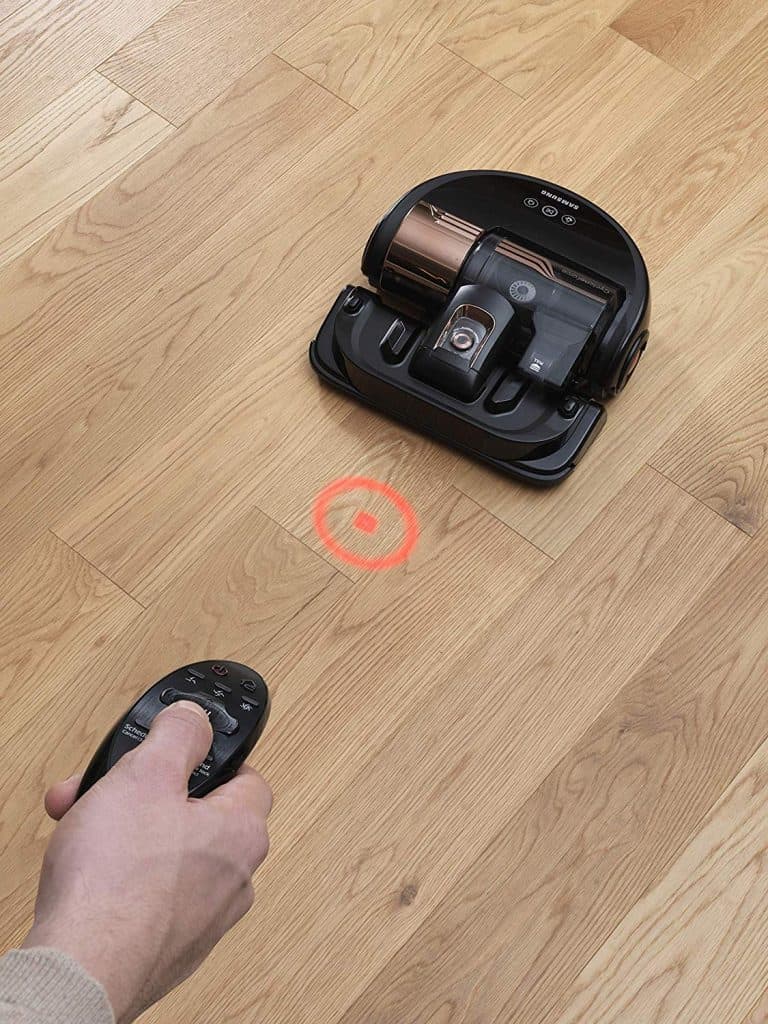
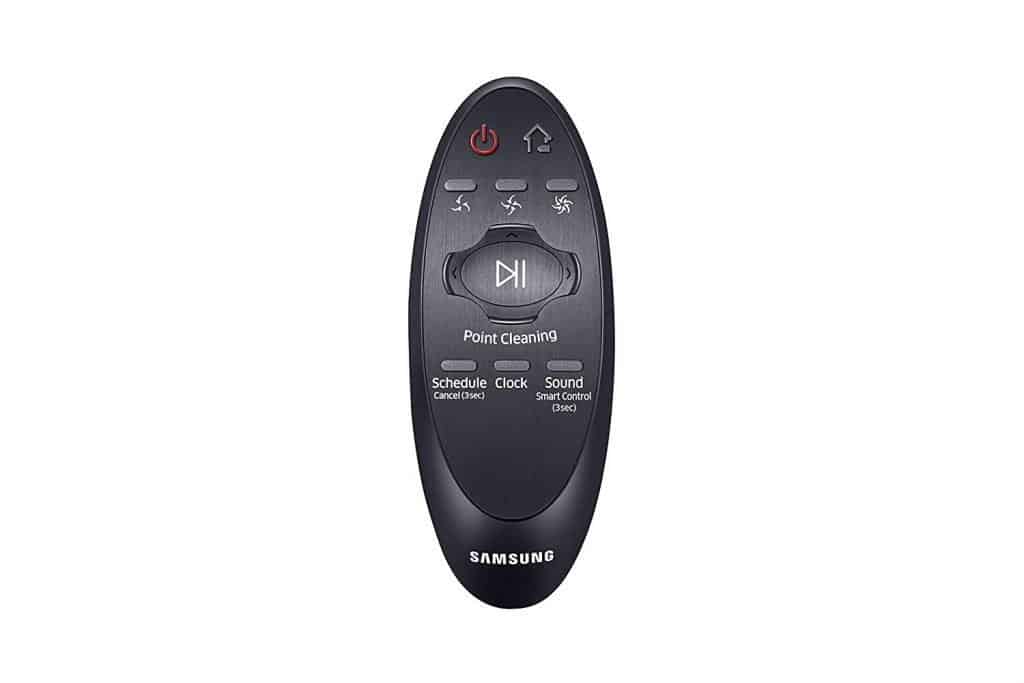
One downside I saw was that it may avoid corners, which certainly isn’t helpful if you want a bot to thoroughly clean your floors. However, it self-charges and drives back to the base as well (as most do). You can set it up to be WiFi connected and use voice controls if that’s more convenient for you too.
This bot has 70x more suction power, but I couldn’t find a Pa rating for it. It also takes up to four hours to charge entirely and runs for 90 minutes before it returns to base
Samsung POWERbot R9350 | Check Price
Final Thoughts
Being able to push a few buttons and have clean floors within a few hours is one of the most attractive parts of having a robot vacuum. You can even leave the house dirty and come back to it clean (if you pick the right robot), saving yourself hours of time and housework.
There are so many similarities between the top five robot vacuums out there, but each one does have its little pros and cons that will affect your decision. Take a careful look at each one and decide what features are most important to you. You may decide you love the self-emptying option like the Roomba i7+ offers, or you might rather go with the Deebot Ozmo 930 with a great mopping function.
See my other Robovac reviews:
